Greenwood Hills Cemetery Tree Walk
Welcome to a walking tour of the majestic and sometimes unusual trees that make their home in Greenwood Hills Cemetery.

Giant Sequoia
It is hard to miss the Giant Sequoia that towers above everything else in the middle of the first loop as you enter the front gate. Giant Sequoias can live to be 3,200 years old and can reach heights over 279 feet. This tree is between 150 and 200 years old. A mere toddler!
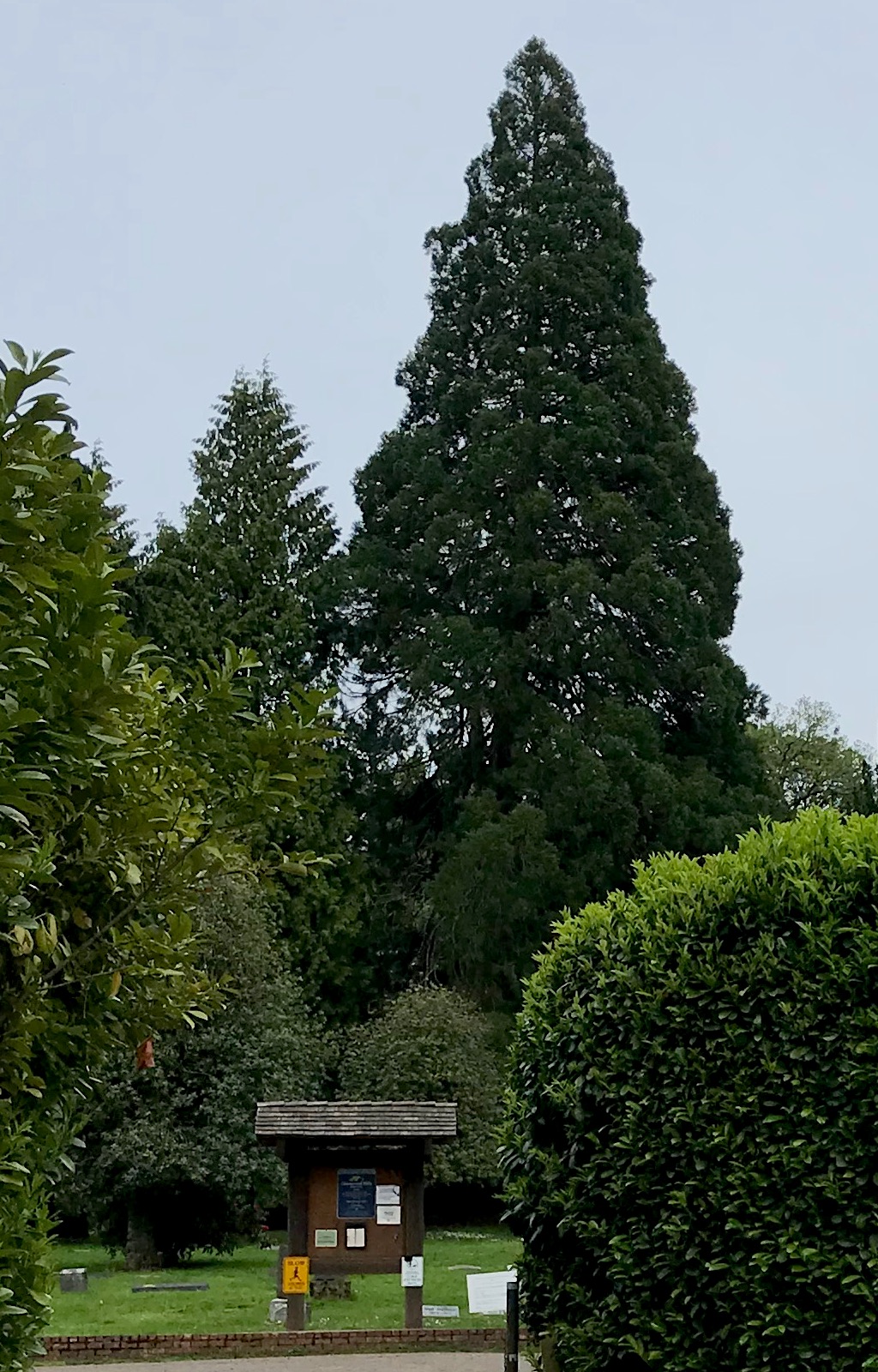

Four Yews
There are four unusual looking evergreens to the left of the parking area that are very dark with seasonal red berries. These are yews and they are the most apropos tree in the cemetery. Historically, the yew was know as the “Graveyard Tree” or “Tree of Death” as there is a history of people and livestock dying from eating the poisonous, yet attractive red berries. In the 1960s the bark was found to contain paclitaxel, a chemical used as an anti-tumor treatment. So sought after, the yew was in danger of extinction until a synthetic version of the chemical was developed.
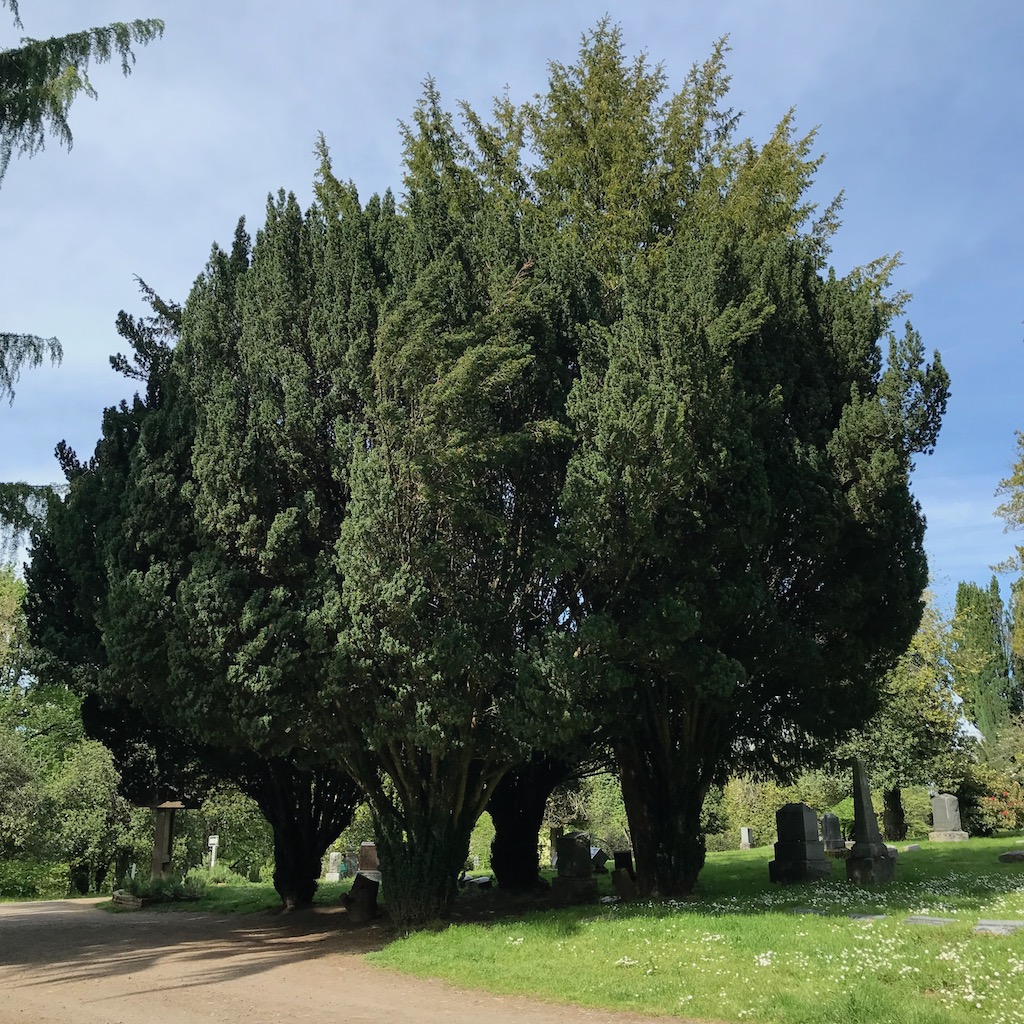
Deodar Cedars
To the right of the parking area is a majestic and graceful Deodar Cedar. Deodar is derived from Sanskrit that translates to “Wood of the Gods”. Native to the Himalayas (introduced to the US in 1983 (more like 1831 -jm)), the Deodar can reach heights of 250 feet.

(There are four Deodars on the western edge of the cemetery. One is right at the parking area, the other three are closer to Primrose Street, shown here. You can almost see Primrose through the hedge. -ed.)
Big Leaf Maple
Just past the parking area is a large big leaf maple tree. Big leaf maples are identified by their large leaves and “helicopter seeds” that spin in the wind. Maple syrup is traditionally made from the sugar maple tree; but any maple can be used to make syrup. The ratio of sap to syrup is 40:1 for big leaf maple syrup.
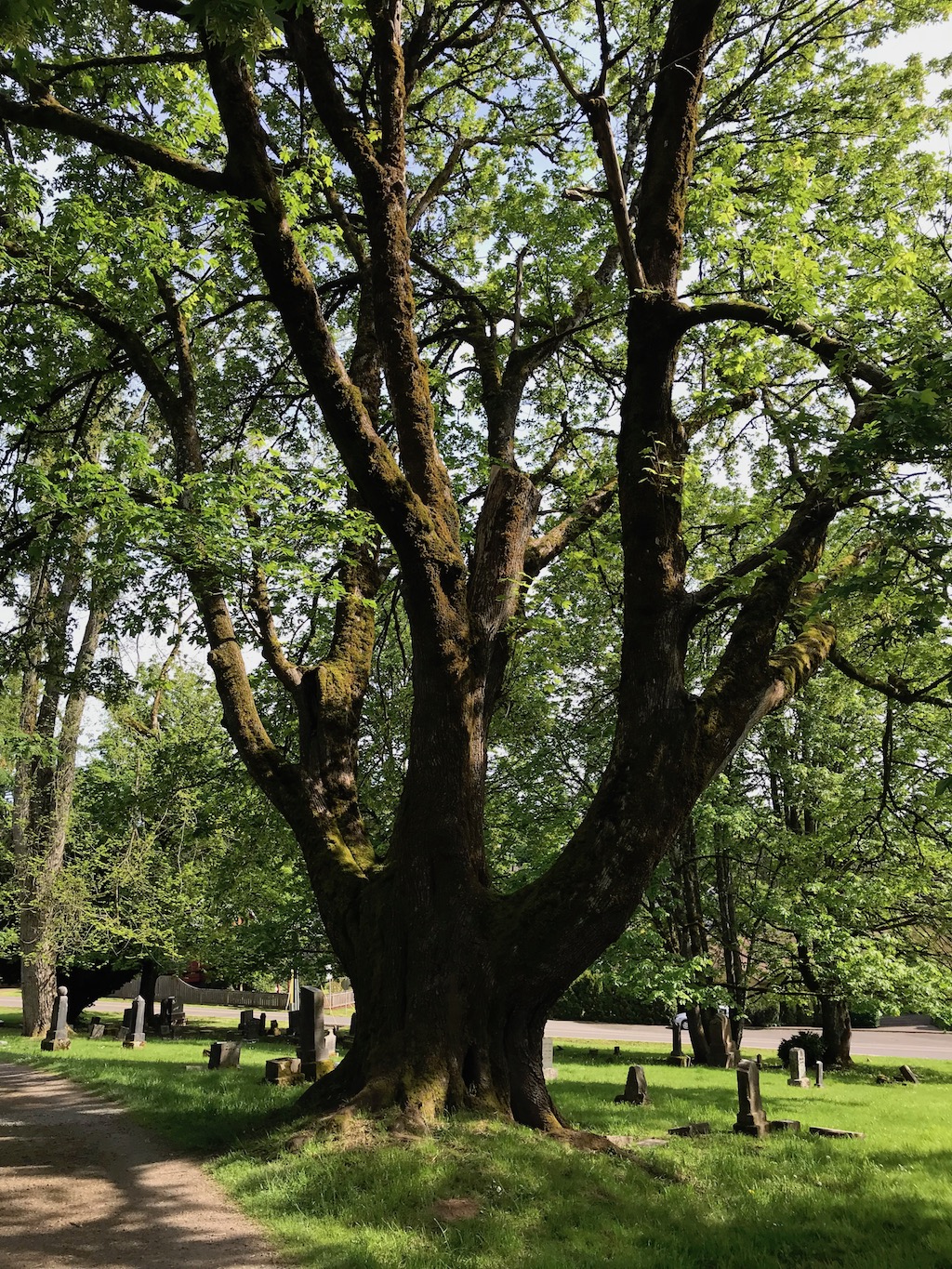
Elm
Beyond the maple is a large elm tree. The elm tree is another tree referred to as the “Tree of Death”, this time alluding to the tree's reputation for dropping boughs and killing those beneath it. There is an English saying “Elm hateth man and waiteth”. The wood is durable and pliable which made it preferred for coffin building and a favored choice for medieval archers to make longbows.

American Chestnut
The wooded area (inside the loop) has large chestnut trees. In the fall, you will find spiny nut pods on the ground in this area. You must remove the green husk and brown outer layer of the nut to reach the edible meat that is often “roasted on an open fire”. Other trees in this area include juniper, Douglas fir, holly, hemlock, and cedar.


China Fir
Toward the end of this stretch you will find a China fir (off to the right, where the road bends left). It is hard to miss with its dagger shaped flat needles and is prized in China for use in coffin making.

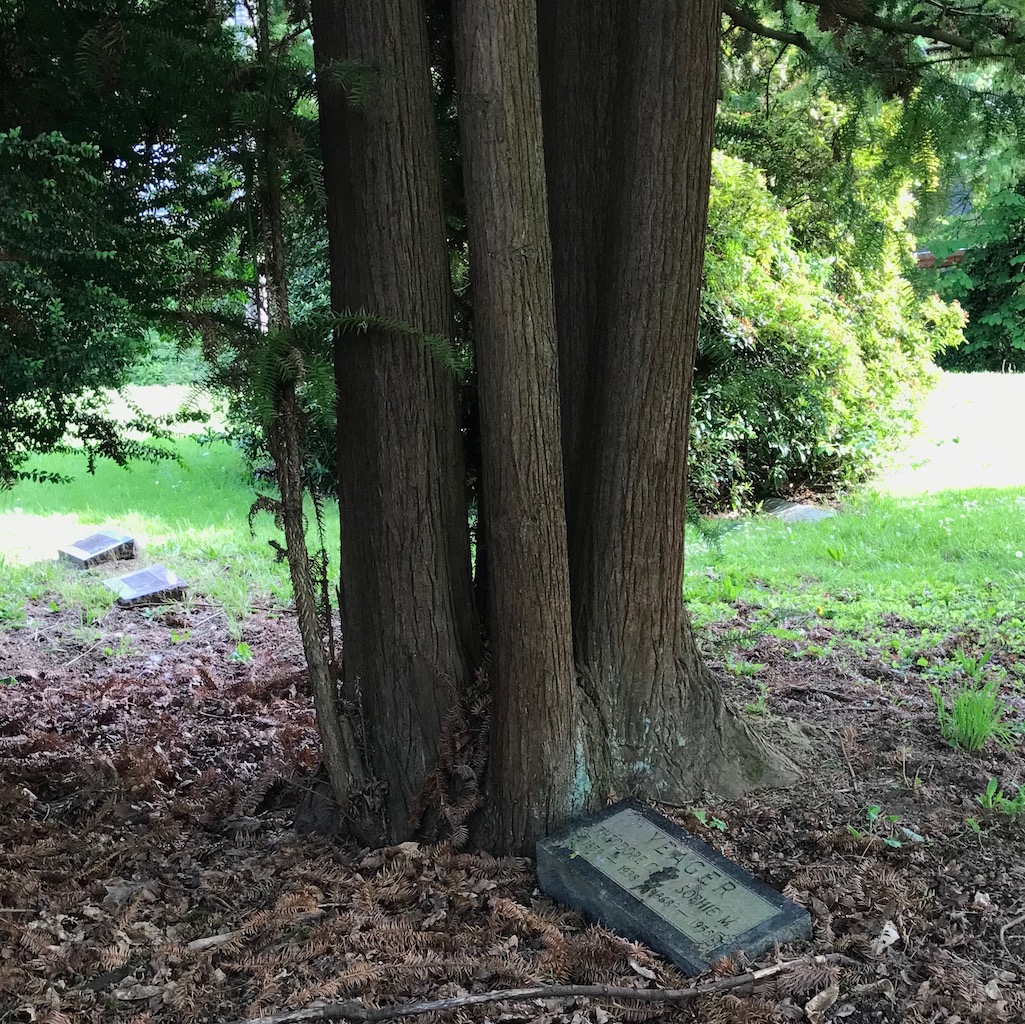
Young Red Cedars
There is a field with young western red cedars to the right. These young red cedars were planted and watered by two of our board members 3 years ago. Some living over 1,000 years and reaching 230 feet in height and 23 feet in diameter, the western red cedar is also called the giant arborvitae (Latin for “tree of life”).

Rhododendron, Blue Spruce, Sycamore

Continue down the hill and turn right past a broad leaf maple, and you will find yourself at a fork. To the left you will see a small pond that is always brimming with activity (birds, frogs, newts, ducks and snakes). In the “Y” of the road is a rhododendron, this “rhody”, when flowering is full of pink flowers. Honey made from the rhododendron can be hallucinogenic. “Mad Honey” is sought after in Nepal to relieve ailments and increase sexual performance.
Across from the rhododendron there is a cylindrical, dense tree with a slight blue tint. This is one of two blue spruces in the cemetery. They are usually conical which is the shape of the other blue spruce (see if you can find it). The Navajo used the blue spruce as a medicinal plant and gave twigs to bring good fortune.
You will come to a row of large trees on your right. The one closest to the road is a silver maple. It grows quickly, provides a shady canopy, and it has sweeter sap than any other maple but produces too little sap for syrup. (Not pictured.) The two other trees are sycamore trees. During the Battle of Brandywine, George Washington sheltered his troops behind sycamore trees and held off the British from taking Philadelphia. Since then, the sycamore is symbol of hope and protection.
Horse Chestnut
The wooded area on the left is home to a cherry tree, small leaf maples, and Douglas firs, among others. One of particular interest, the horse chestnut, should not be confused with the American chestnut. The horse chestnut is toxic and not edible. In World War I, the British government held a campaign asking everyone to collect horse chestnuts (“conkers”). They provided starch for the production of cordite for the war.
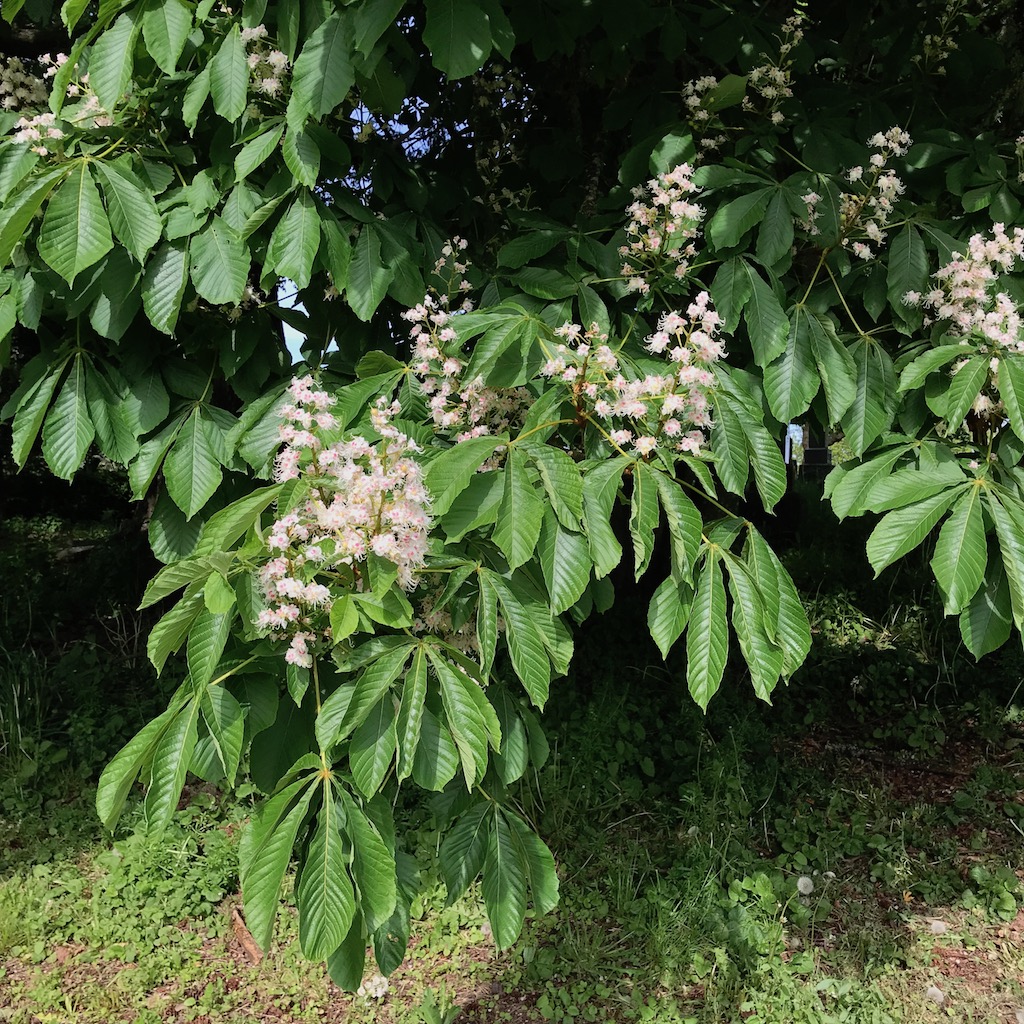
Heading (around the loop) back toward the pond, on the right is a wooded area and deep ravine. This is home to a resident pack of coyotes. The woods are made up of willows, mulberry, hawthorn, poplar, and birch, just to name a few.
Past the pond, you will stay right and pass several Holly trees on your left. Holly are known for their bright red berries and prickly leaves. The Druids viewed holly as a symbol of fertility and eternal life, hanging the plant to bring good luck and protection. The Romans would decorate halls with holly boughs. Traditions changed to reflect Christian beliefs and legend states the blood of Christ stained the berries red forever and that the pointy leaves symbolize the crown of thorns.
Don't forget to read some of the inscriptions on the headstones as you enjoy the trees. An article about some of the people buried in Greenwood Hills Cemetery is in the works.
